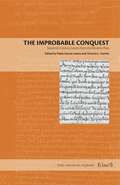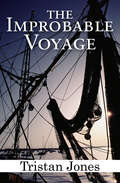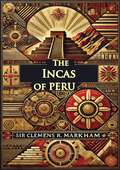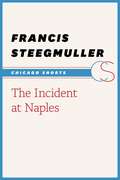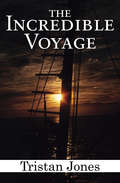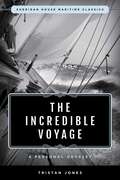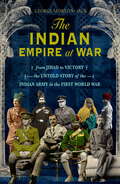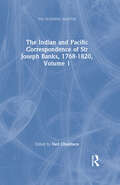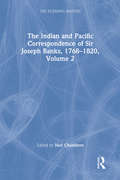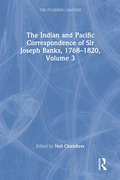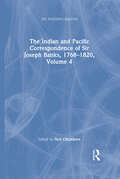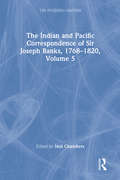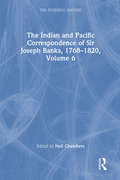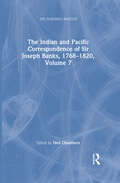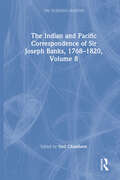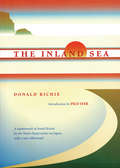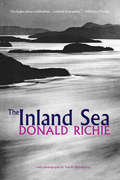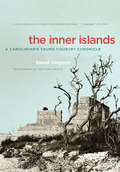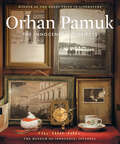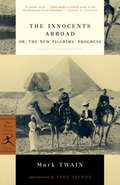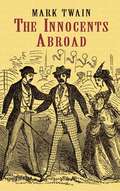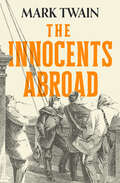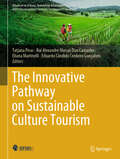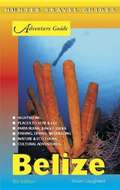- Table View
- List View
The Improbable Conquest: Sixteenth-Century Letters from the Río de la Plata (Latin American Originals)
by Pablo García Loaeza and Victoria L. GarrettThe Improbable Conquest offers translations of a series of little-known letters from the chaotic Spanish conquest of the Río de la Plata region, uncovering a rich and understudied historical resource. These letters were written by a wide variety of individuals, including clergy, military officers, and the region’s first governor, Pedro de Mendoza. There is also an exceptional contribution from Isabel de Guevara, one of the few women involved in the conquest to have recorded her experiences. Writing about the conditions of settlements and expeditions, these individuals vividly expose the less glamorous side of the conquest, narrating in detail various misfortunes, infighting, corruption, and complaints. Their letters further reveal the colony’s fraught relationship with the native peoples it sought to colonize, giving insight into the complexities of the conquest and the colonization process. Pablo García Loaeza and Victoria Garrett provide an introduction to the history of the region and the conquest’s key players, as well as a timeline and a glossary explaining difficult and archaic Spanish terms.
The Improbable Voyage
by Tristan JonesThe sailor-author navigates his famous yacht, Outward Leg, across the rivers of Europe in this travel memoir that&’s &“vintage Tristan Jones&” (Publishers Weekly). The Improbable Voyage is the account of master sailor and storyteller Tristan Jones' 2,307-mile voyage across Europe in an oceangoing trimaran, Outward Leg. Continuing his round-the-world journey, Jones traveled from the North Sea to the Black Sea via the rivers Rhine and Danube. Battling ice and cold, life-threatening rapids and narrow defiles, German bureaucrats and Romanian frontier police, the indomitable Jones made his way through eight countries and emerged triumphant, if battered, bruised and penniless, at the Black Sea.Tristan Jones is one of the best-known authors of sailing stories. A Welshman, he left school at age 14 to work on sailing barges and spent the rest of his life at sea.
The Incas of Peru
by Sir Clemens R. MarkhamThe Incas of Peru by Sir Clemens R. Markham is an authoritative and captivating exploration of the history, culture, and legacy of one of the most fascinating civilizations in the ancient world. Written by a distinguished historian and explorer, this book offers a comprehensive and detailed account of the rise and fall of the Inca Empire, providing readers with a deep understanding of the people who once ruled over a vast and sophisticated empire in the Andes.Markham, who devoted much of his career to the study of Peru and its indigenous cultures, combines meticulous research with vivid narrative to bring the story of the Incas to life. He traces the origins of the Inca people, their development into a powerful empire, and the remarkable achievements in architecture, agriculture, and administration that defined their civilization. Markham also delves into the religious and social structures of the Incas, offering insights into their unique worldview and the role of the Sapa Inca, or emperor, as both a political and spiritual leader.The Incas of Peru explores the dramatic events of the Spanish conquest, examining how the arrival of Francisco Pizarro and his forces led to the downfall of the Inca Empire. Markham presents a balanced view of the conflict, highlighting both the resilience of the Inca people and the devastating impact of European colonization.Throughout the book, Markham’s deep respect for the Inca civilization is evident, as he sheds light on the enduring legacy of the Incas and their influence on the culture and history of Peru. His work is enriched by his own experiences in Peru, including his travels to Inca sites and his interactions with the descendants of the Inca people.The Incas of Peru is essential reading for historians, archaeologists, and anyone interested in the rich history of South America. Sir Clemens R. Markham’s scholarly expertise and engaging writing make this book a timeless classic that continues to inspire and educate readers about the remarkable civilization of the Incas.
The Incident at Naples
by Francis SteegmullerBorn in Australia, novelist Shirley Hazzard first moved to Naples as a young woman in the 1950s to take up a job with the United Nations. It was the beginning of a long love affair with the city, in which the Naples of Pliny, Gibbon, and Auden constantly became reanimated by new experiences, as Hazzard was joined in her travels by her husband, the editor and critic Francis Steegmuller. In The Incident at Naples, a classic essay first published by the New Yorker, Steegmuller recollects on how he was, as a tourist to the city, robbed and injured and then treated in a series of hospitals. What can The Incident at Naples teach us? A town shadowed by both the symbol and the reality of Vesuvius can never fail to acknowledge the essential precariousness of life-nor, as Hazzard and Steegmuller discover, the human compassion, generosity, and friendship that are necessary to sustain it.
The Incredible Voyage: A Personal Odyssey
by Tristan JonesA Welshman&’s witty and gritty sailing adventure memoir with &“the bite of fine sea salt and a whiplike delivery&” (Kirkus Reviews). Follow the supreme adventurer, Tristan Jones, as he takes a solitary and intrepid six-year voyage on his small craft, The Sea Dart. Covering a distance twice the circumference of the globe, from the lowest body of water in the world—the Dead Sea—to the highest—Lake Titicaca in the Andes—Jones finds himself "a thousand times beyond the limit of endurance." With tenacity stronger than any obstacle, Jones refuses to give up his adventure, even after falling prey to several disasters that could have killed him. Struggling against the mighty current of the Amazon, hauling his boat over the Andes Mountains and capsizing off the Cape of Good Hope do not discourage him. This gripping story is a testament to his indomitable spirit and thirst for danger.
The Incredible Voyage: A Personal Odyssey (Maritime Classics)
by Tristan JonesIn a salty, slashing style, Tristan Jones unfolds his extraordinary saga—a six-year voyage during which he covered a distance equal to twice the circumference of the world—revealing both a rich sense of history and an insuppressible Welsh wit.With a singleness of purpose as ferocious as any hazard he encountered, Tristan Jones would not give up—even after dodging snipers on the Red Sea, capsizing off the Cape of Good Hope, starving in the Amazon, struggling for 3,000 miles against the mightiest sea current in the world, and hauling his boat over the rugged Andes three miles above sea level to find at last the legendary Island of the Sun. And beyond lay the most awesome challenge of all: the tortuous trek through 6,000 miles of uncharted rivers to find his way back to the ocean.
The Indian Empire At War: From Jihad to Victory, The Untold Story of the Indian Army in the First World War
by George Morton-Jack'Essential to a proper understanding of the war and of our world of today' Michael Morpurgo1.5 million Indians fought with the British in the First World War - from Flanders to the African bush and the deserts of the Islamic world, they saved the Allies from defeat in 1914 and were vital to global victory in 1918. Using previously unpublished veteran interviews, this is their story, told as never before.
The Indian and Pacific Correspondence of Sir Joseph Banks, 1768-1820, Volume 1 (The\pickering Masters Ser.)
by Neil ChambersAfter James Cook's voyage in HMS Endeavour, Banks developed a network of scientists and explorers. Banks's correspondence is one of the great primary sources for studying the Pacific region during this important period of exploration and colonial expansion.
The Indian and Pacific Correspondence of Sir Joseph Banks, 1768–1820, Volume 2 (The Pickering Masters)
by Neil ChambersFollowing his participation in James Cook's circumnavigation in HMS Endeavour (1768-71), Joseph Banks developed an extensive global network of scientists and explorers. His correspondence shows how he developed effective working links with the British Admiralty and with the generation of naval officers who sailed after Cook. Volume 2 1768–1820.
The Indian and Pacific Correspondence of Sir Joseph Banks, 1768–1820, Volume 3 (The Pickering Masters)
by Neil ChambersFollowing his participation in James Cook's circumnavigation in HMS Endeavour (1768-71), Joseph Banks developed an extensive global network of scientists and explorers. His correspondence shows how he developed effective working links with the British Admiralty and with the generation of naval officers who sailed after Cook. Volume 3 Letters 1789–1792
The Indian and Pacific Correspondence of Sir Joseph Banks, 1768–1820, Volume 4 (The\pickering Masters Ser.)
by Neil ChambersFollowing his participation in James Cook's circumnavigation in HMS Endeavour (1768-71), Joseph Banks developed an extensive global network of scientists and explorers. His correspondence shows how he developed effective working links with the British Admiralty and with the generation of naval officers who sailed after Cook.
The Indian and Pacific Correspondence of Sir Joseph Banks, 1768–1820, Volume 5 (The Pickering Masters)
by Neil ChambersFollowing his participation in James Cook's circumnavigation in HMS Endeavour (1768-71), Joseph Banks developed an extensive global network of scientists and explorers. His correspondence shows how he developed effective working links with the British Admiralty and with the generation of naval officers who sailed after Cook. Volume 5 Letters 1798–1801
The Indian and Pacific Correspondence of Sir Joseph Banks, 1768–1820, Volume 6 (The Pickering Masters)
by Neil ChambersFollowing his participation in James Cook's circumnavigation in HMS Endeavour (1768-71), Joseph Banks developed an extensive global network of scientists and explorers. His correspondence shows how he developed effective working links with the British Admiralty and with the generation of naval officers who sailed after Cook. Volume 6 Letters 1801–1805
The Indian and Pacific Correspondence of Sir Joseph Banks, 1768–1820, Volume 7 (The\pickering Masters Ser.)
by Neil ChambersFollowing his participation in James Cook's circumnavigation in HMS Endeavour (1768-71), Joseph Banks developed an extensive global network of scientists and explorers. His correspondence shows how he developed effective working links with the British Admiralty and with the generation of naval officers who sailed after Cook.
The Indian and Pacific Correspondence of Sir Joseph Banks, 1768–1820, Volume 8 (The\pickering Masters Ser.)
by Neil ChambersFollowing his participation in James Cook's circumnavigation in HMS Endeavour (1768-71), Joseph Banks developed an extensive global network of scientists and explorers. His correspondence shows how he developed effective working links with the British Admiralty and with the generation of naval officers who sailed after Cook.
The Inland Sea
by Pico Iyer Donald Richie"Earns its place on the very short shelf of books on Japan that are of permanent value."--Times Literary Supplement. "Richie is a stupendous travel writer; the book shines with bright witticisms, deft characterizations of fisherfolk, merchants, monks and wistful adolescents, and keen comparisons of Japanes and Western culture." --San Francisco Chronicle"A learned, beautifully paced elegy."--London Review of BooksSheltered between Japan's major islands lies the Inland Sea, a place modernity passed by. In this classic travel memoir, Donald Richie embarks on a quest to find Japan's timeless heart among its mysterious waters and forgotten islands. This edition features an introduction by Pico Iyer, photographs from the award-winning PBS documentary, and a new afterword. First published in 1971, The Inland Sea is a lucid, tender voyage of discovery and self-revelation. Donald Richie is the foremost authority on Japanese culture and cinema with 40+ books in print.
The Inland Sea
by Donald Richie"Earns its place on the very short shelf of books on Japan that are of permanent value. "-"Times Literary Supplement. " "Richie is a stupendous travel writer; the book shines with bright witticisms, deft characterizations of fisherfolk, merchants, monks and wistful adolescents, and keen comparisons of Japanes and Western culture. " -San Francisco Chronicle "A learned, beautifully paced elegy. "-"London Review of Books" Sheltered between Japan's major islands lies the Inland Sea, a place modernity passed by. In this classic travel memoir, Donald Richie embarks on a quest to find Japan's timeless heart among its mysterious waters and forgotten islands. This edition features an introduction by Pico Iyer, photographs from the award-winning PBS documentary, and a new afterword. First published in 1971, "The Inland Sea "is a lucid, tender voyage of discovery and self-revelation. Donald Richie is the foremost authority on Japanese culture and cinema with 40+ books in print.
The Inland Sea
by Donald Richie Yoichi Midorikawa"An elegiac prose celebration . . . a classic in its genre."--Publishers WeeklyIn this acclaimed travel memoir, Donald Richie paints a memorable portrait of the island-studded Inland Sea. His existential ruminations on food, culture, and love and his brilliant descriptions of life and landscape are a window into an Old Japan that has now nearly vanished. Included are the twenty black and white photographs by Yoichi Midorikawa that accompanied the original 1971 edition.Donald Richie (1924-2013) was an internationally recognized expert on Japanese culture and film. Yoichi Midorikawa (1915-2001) was one of Japan's foremost nature photographers.
The Inner Islands
by Bland Simpson Ann Cary SimpsonBlending history, oral history, autobiography, and travel narrative, Bland Simpson explores the islands that lie in the sounds, rivers, and swamps of North Carolina's inner coast. In each of the fifteen chapters in the book, Simpson covers a single island or group of islands, many of which, were it not for the buffering Outer Banks, would be lost to the ebbs and flows of the Atlantic. Instead they are home to unique plant and animal species and well-established hardwood forests, and many retain vestiges of an earlier human history.
The Innocence of Objects
by Orhan PamukThe Nobel Prize winner&’s catalog of his Istanbul museum is like &“wandering past the illuminated windows of an arcade. . . . This book spills over with pleasure&”(The New York Times). The culmination of decades of omnivorous collecting, Orhan Pamuk&’s Museum of Innocence in Istanbul uses his novel of lost love, The Museum of Innocence, as a departure point to explore the city of his youth. In The Innocence of Objects, Pamuk&’s catalog of this remarkable museum, he writes about things that matter deeply to him: the psychology of the collector, the proper role of the museum, the photography of old Istanbul (illustrated with Pamuk&’s superb collection of haunting photographs and movie stills), and of course the customs and traditions of his beloved city. The book&’s imagery is equally evocative, ranging from the ephemera of everyday life to the superb photographs of Turkish photographer Ara Güler. Combining compelling visual images and writing, The Innocence of Objects is an original work of art and literature.
The Innocents Abroad
by Mark TwainMark Twain is best known for his novels and short stories. Twain uses his incredible whit to depict life in America. His books Tom Sawyer and Huckleberry Finn have been read by school children for generations. His life on the Mississippi River has peeked the imagination of boys to go and build a raft and sail off into unknown adventures. From the original dust jacket, The Innocents Abroad of 1869 and Roughing It of 1872 . . . remain today among the most popular travel books ever written. The Innocents Abroad, based largely on letters written for New York and San Francisco newspapers, narrates the progress of the first American organized tour of Europe, to Naples, Smyrna, Constantinople, and Palestine. . . . Roughing It is the light-hearted account of Mark Twain's actual and imagined adventures when he escaped the Civil War and joined his brother, recently appointed Secretary of the Nevada Territory. His accounts of stagecoach travel, Indians, Western dress and food, and customs, frontier society . . . are intermingled with his own experiences as a prospector, miner, journalist, boon companion and lecturer as he traveled through Nevada, Utah, California and even to the Hawaiian Islands.
The Innocents Abroad
by Mark TwainHailed by the New York Herald as “an oasis in the desert of works on foreign travel,” The Innocents Abroad was a great success when first published, and it remained the bestselling of all Twain’s works throughout his lifetime. It shows the author at the height of his literary power as he records razor-sharp, often hilarious, observations of the people he meets and places he visits during a trip to Europe and the Holy Land in 1867.Originally a series of travel letters written for a San Francisco newspaper, the book presents a refreshingly honest and vivid view of such places as Tangier, Marseilles, Gibraltar, Rome, Constantinople, and Damascus. Twain’s humor takes a particularly satirical turn toward tourists who rely on travel guidebooks rather than personal impressions to define their travel experiences. The book alternates light-hearted chapters with serious passages involving history, statistics, and descriptions of religious relics, artwork, and architecture.From amusements and tribulations at sea, viewing the “outrageous” cancan in Paris, and witnessing the notable sights of Venice, to observing the grandeur of St. Peter’s, ascending Vesuvius, and contemplating the remains of Solomon’s Temple, this classic will delight a wide audience, including longtime fans of the American humorist and anyone who enjoys an entertaining and enlightening travel book. This edition also includes all the illustrations from the original publication.
The Innocents Abroad: Or, The New Pilgrim's Progress...
by Mark TwainThe book that made Mark Twain famous and introduced theworld to that obnoxious and ubiquitous character: the American tourist Based on a series of letters first published in American newspapers, The Innocents Abroad is Mark Twain&’s hilarious and insightful account of an organized tour of Europe and the Holy Land undertaken in 1867. With his trademark blend of skepticism and sincerity, Twain casts New World eyes on the people and places of the Old World, including London, Paris, Rome, Odessa, Constantinople, Damascus, and Jerusalem. He skewers the idiosyncrasies and pretensions of Americans abroad and delights in tormenting the local tour guides. In Lake Como, he insists that Lake Tahoe is nicer. In Genoa, he and his fellow travelers claim they&’ve never heard of Christopher Columbus. First published in 1869, The Innocents Abroad made Mark Twain a national celebrity. For the rest of the author&’s life, it outsold all his other books, and remains one of the bestselling travelogues of all time. Part satire, part guidebook, it&’s a must-read for fans of this inimitable author and anyone who has experienced the pleasure and the pain of being a tourist. This ebook has been professionally proofread to ensure accuracy and readability on all devices.
The Innovative Pathway on Sustainable Culture Tourism (Advances in Science, Technology & Innovation)
by Eliana Martinelli Tatjana Pivac Rui Alexandre Marçal Dias Castanho Eduardo Cândido Cordeiro GonçalvesThis book explores how tourism can drive positive change in our world. It explorers at the important connections between sustainability, tourism, and cultural preservation, showing how these elements interact and influence each other. By examining the effects of tourism on local communities and environments, it emphasizes that responsible tourism can truly be a force for good. This book features case studies from countries like Saudi Arabia, Portugal, and China. These examples illustrations show innovative approaches to support local communities while preserving their cultural heritage. Each case study offers a look at how tourism can help enhance social and economic development while also keeping a balance between cultural and environmental needs. This book is for everyone—policymakers, scholars, and industry professionals alike. It brings together ideas from various fields and provides practical strategies for responsible tourism. By inviting readers to rethink tourism&’s role in our increasingly globalized world, it highlights its potential to encourage environmental stewardship and strengthen local identities, ensuring that travel enriches our lives and helps preserve the cultural and natural treasures we hold dear.
The Insider's Guide To Korea
by Peter PophamFor the traveler, Korea is a country whose time has come. Korea is a country with a powerful identity of its own. A good neighbor to China, a beneficiary over the millennia of all the wealth of Chinese cultural achievement, it has never failed to interpret these gifts in its own way, infusing them with flavors found nowhere else. There is nothing in the world, for instance, like Korean food, or classical Korean pottery, or modern Korean dance. Travelers attracted by Korea's heritage will find all manner of things to absorb them, from mountain temples to city palaces, from villages unchanged for centuries to the tombs of kings who died 1,500 or more years ago. But even for those who just want a holiday, Korea has a lot to offer: the wooded mountains of the numerous national parks, excellent beaches, the voluptuously beautiful island of Cheju-do in the south, which has almost everything and is quite unspoiled. Seoul, a crazy shambles just a year or two back when they were building the subway, is now much calmer and can be negotiated with ease. Its covered markets with their hundreds of little eateries offer an incredible banquet for the senses, even if you don't eat anything. And for high-quality clothes, shoes and bags, the city remains the bargain basement of the world.
